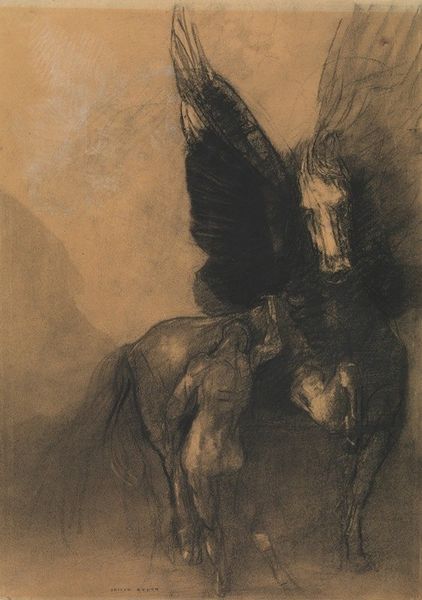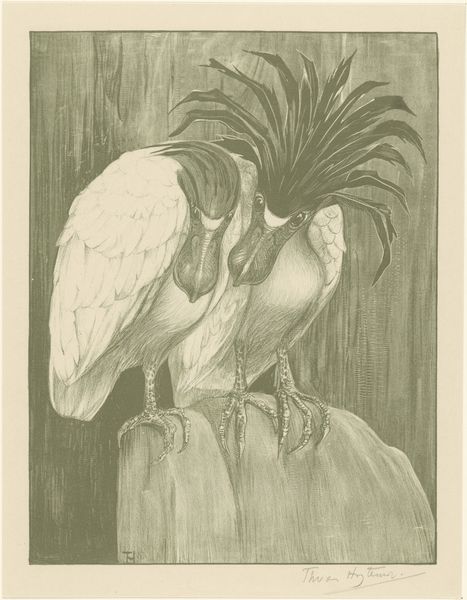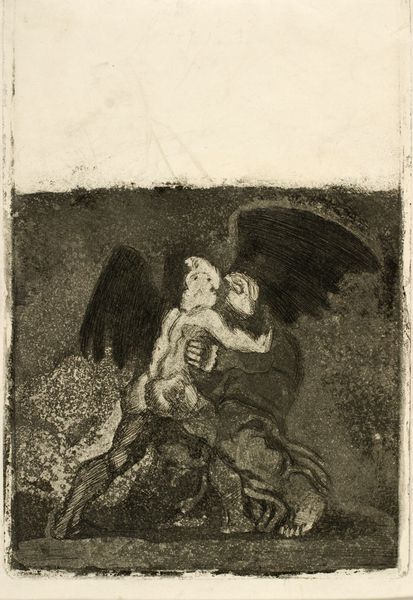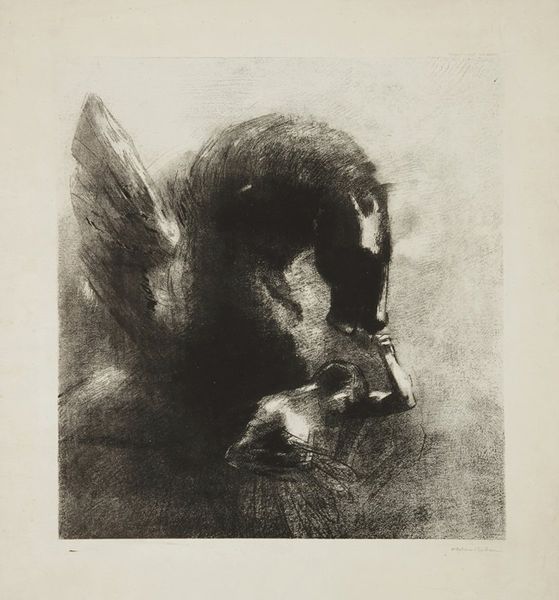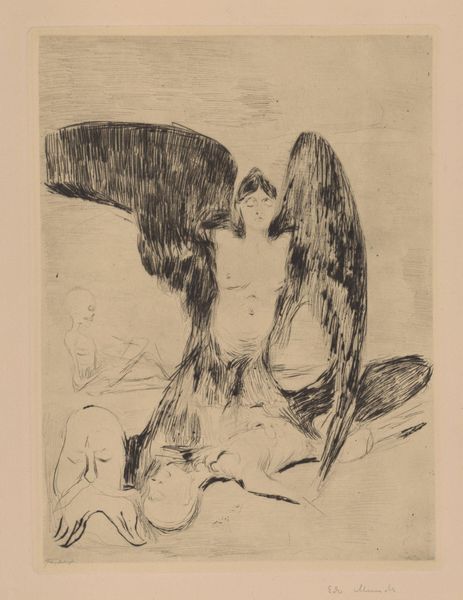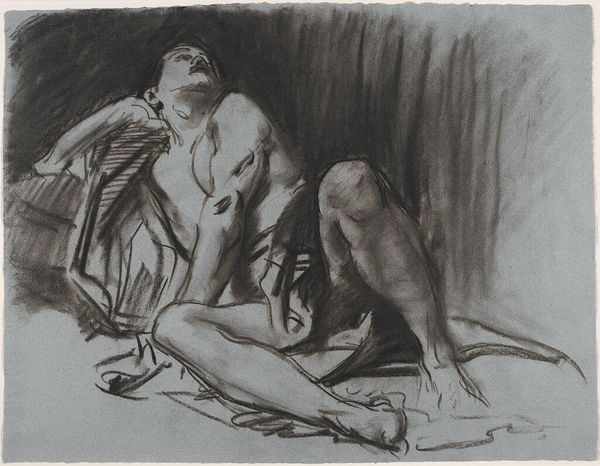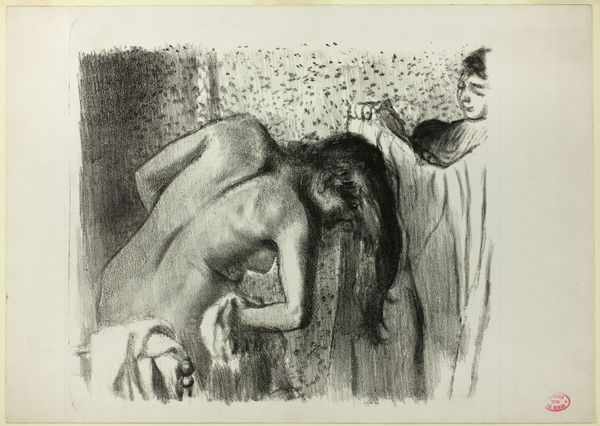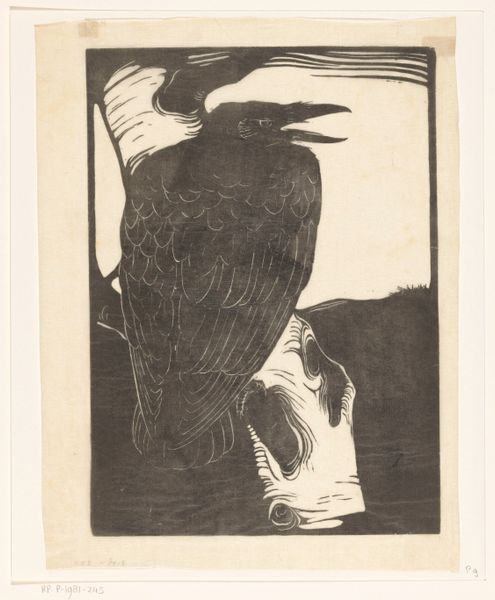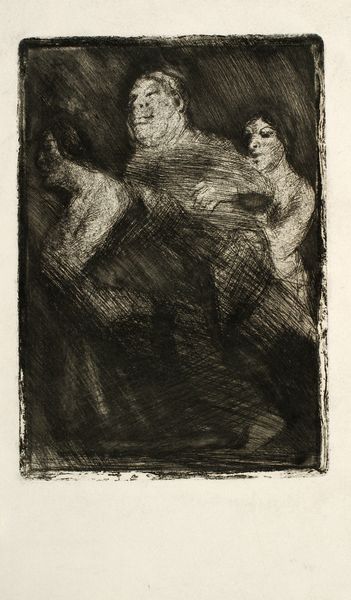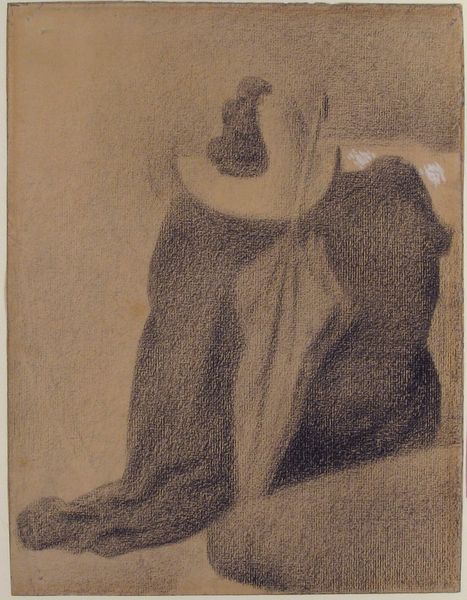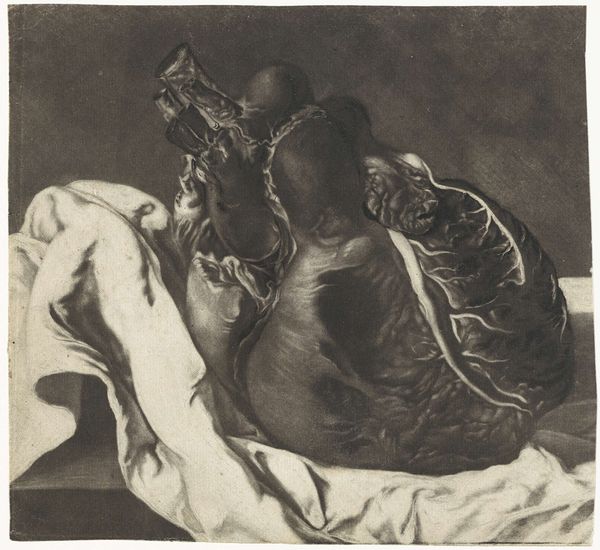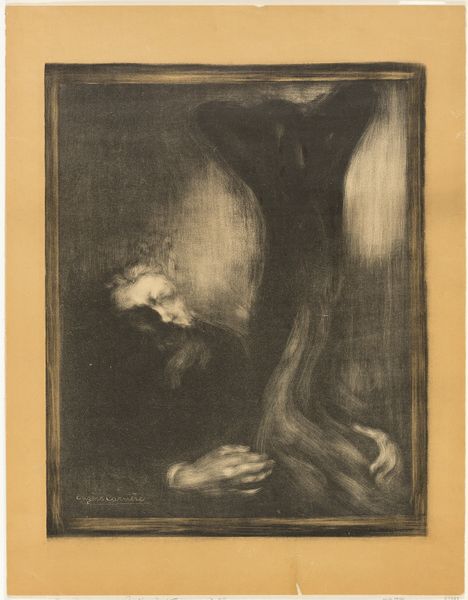
drawing, charcoal
#
drawing
#
charcoal drawing
#
charcoal
#
naturalism
Dimensions: height 170 cm, width 112.2 cm, thickness 3.5 cm, depth 5.5 cm
Copyright: Rijks Museum: Open Domain
Editor: This is "Two Arabian Vultures" by Theo van Hoytema, likely created sometime between 1885 and 1917. It's a charcoal drawing and, wow, it’s intense! The birds fill the frame. What social commentary can you pull from it? Curator: Well, it’s interesting that Hoytema chose vultures as a subject. These aren't your typical majestic birds. The public perception of them then and now tends to be quite negative. Why elevate such a creature in art? Editor: Maybe to challenge those perceptions? To show their beauty? Or perhaps even something darker? Curator: Precisely! Consider the historical context. Naturalism was gaining traction, aiming to depict subjects honestly, even the unpleasant ones. How do you think exhibiting these birds serves that movement? Editor: Maybe by forcing viewers to confront an unvarnished reality. Naturalism was also about everyday life, but how can these birds fall into such category? Curator: Indeed! Think of how scientific illustrations were displayed; the goal of the artist was not aesthetic beauty but detailed scientific analysis, with an aim to improve quality of human life by documenting every detail on medicine. The vultures' presence here challenges traditional ideas of beauty in art, a subtle social critique. Editor: So, it's less about aesthetic beauty and more about making people *think* about what we value… I see, I hadn't thought about it that way! Curator: Exactly. By displaying this image, museums indirectly influence what the public deems worthy of attention and preservation. The artist subtly reshapes how the natural world is viewed. Editor: That's so true. I never really considered the power dynamic inherent in something as simple as displaying a drawing! Curator: Museums give relevance to pieces, like Hoytema’s drawing, it really shapes our understanding of art and even nature.
Comments
No comments
Be the first to comment and join the conversation on the ultimate creative platform.
